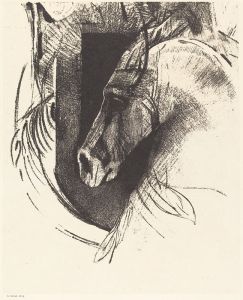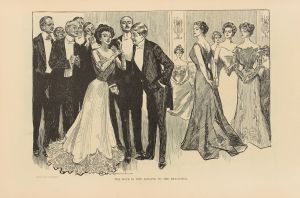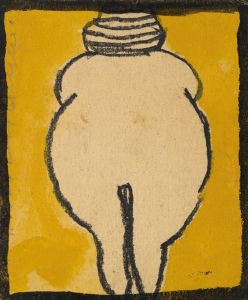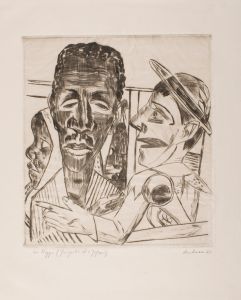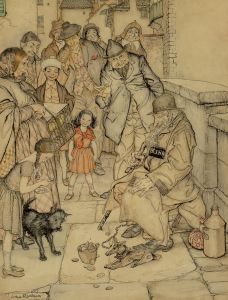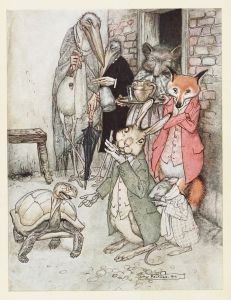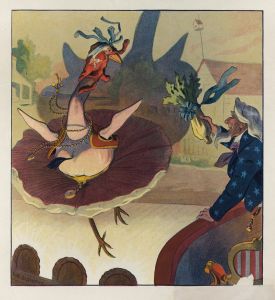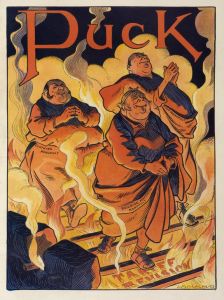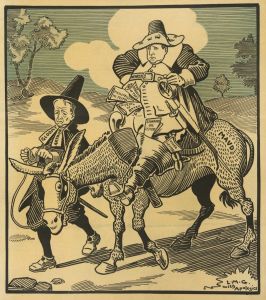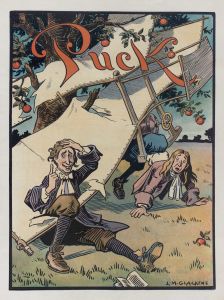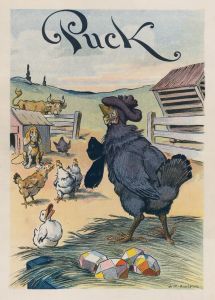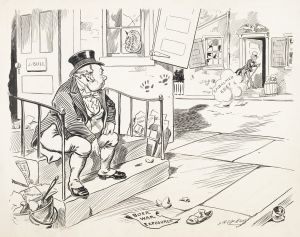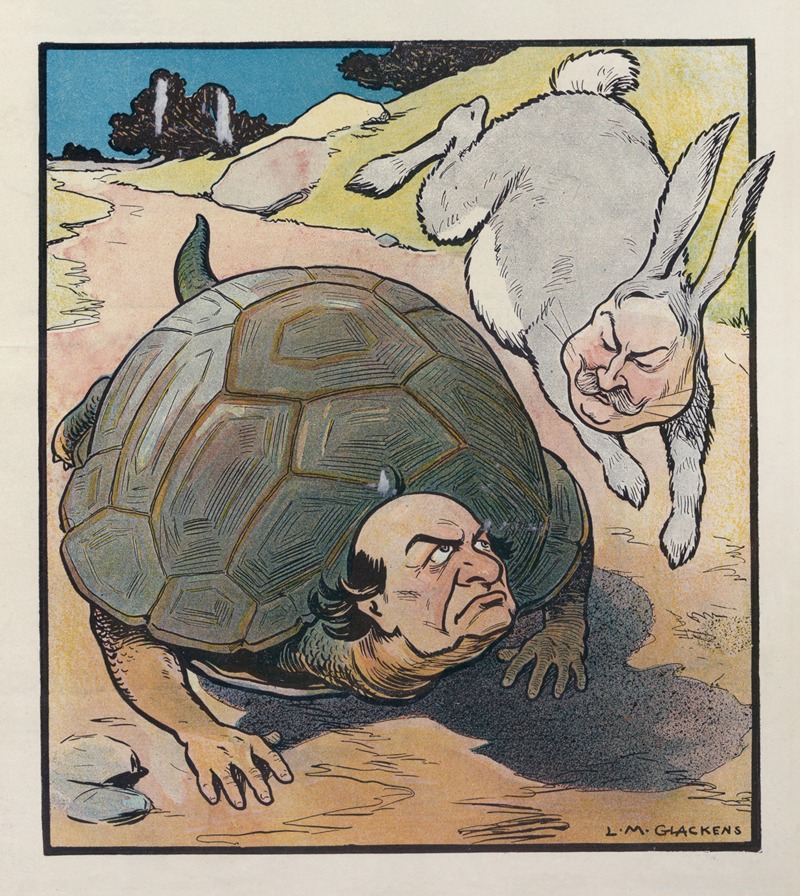
The republican hare and the democratic tortoise
A hand-painted replica of Louis Glackens’s masterpiece The republican hare and the democratic tortoise, meticulously crafted by professional artists to capture the true essence of the original. Each piece is created with museum-quality canvas and rare mineral pigments, carefully painted by experienced artists with delicate brushstrokes and rich, layered colors to perfectly recreate the texture of the original artwork. Unlike machine-printed reproductions, this hand-painted version brings the painting to life, infused with the artist’s emotions and skill in every stroke. Whether for personal collection or home decoration, it instantly elevates the artistic atmosphere of any space.
Louis Glackens was an American illustrator and animator known for his work in the early 20th century. One of his notable works is the political cartoon titled "The Republican Hare and the Democratic Tortoise." This piece is a satirical illustration that draws inspiration from Aesop's fable "The Tortoise and the Hare," using it as an allegory to comment on the political climate of the time.
The cartoon was created during a period when political cartoons were a popular medium for expressing political opinions and critiquing political figures and parties. Glackens, like many of his contemporaries, used humor and familiar stories to make political commentary more accessible to the general public. The use of animals in political cartoons was a common technique, as it allowed artists to convey complex political situations and personalities in a way that was easily understandable and engaging.
In "The Republican Hare and the Democratic Tortoise," Glackens employs the characters of the hare and the tortoise to represent the Republican and Democratic parties, respectively. The choice of these animals is significant, as it plays on the characteristics traditionally associated with them in the fable: the hare is fast and overconfident, while the tortoise is slow but steady. This allegory was particularly relevant during election periods, as it highlighted the perceived strengths and weaknesses of each political party.
The cartoon likely reflects the political dynamics of the early 20th century, a time when the United States was experiencing significant social and economic changes. The Republican Party, often associated with business interests and rapid economic growth, could be seen as the hare, eager and sometimes overconfident in its approach. On the other hand, the Democratic Party, traditionally associated with more progressive reforms and a cautious approach to change, could be represented by the tortoise, emphasizing a steady and deliberate path.
Louis Glackens' work, including this cartoon, was published in various periodicals of the time, contributing to public discourse and influencing public opinion. Political cartoons like "The Republican Hare and the Democratic Tortoise" played a crucial role in shaping the political landscape by providing a platform for critique and discussion. They were an essential part of the democratic process, allowing artists to voice their perspectives and engage citizens in political dialogue.
While specific details about the publication and reception of "The Republican Hare and the Democratic Tortoise" are limited, the cartoon remains an example of how artists like Glackens used their craft to comment on and influence the political narratives of their time. Through his work, Glackens not only entertained but also provoked thought and reflection on the political issues facing the nation.





